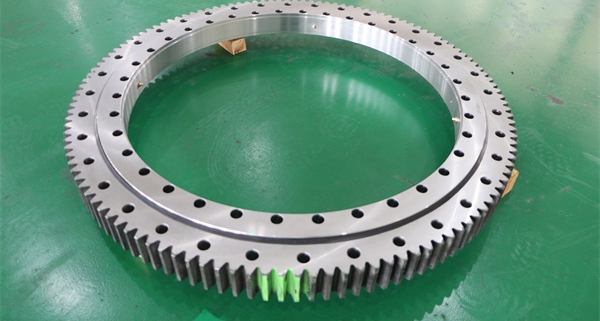Speaking of crane slewing bearing wear, the inspection methods are mainly divided into rotary method and tilt method. As for which inspection method to choose, it is mainly determined whether to use the tilt method or the rotary method to measure the bearing wear according to the counterweight configuration of the crane.
The basic premise of the slewing method is that the bearing can always be tilted fully forward in the direction of the boom, and that this tilt follows the rotation of the crane.
1. There is no load on the hook, tighten the hook to a higher position, release the boom to the horizontal position (note that the boom does not collide with the platform facilities when turning horizontally) or lower the boom to the maximum limit position (the minimum level of the boom angle);
2. Use the base of the magnetic dial indicator to fix it to the position of the crane base, the magnetic pointer points to the clean and rust-free horizontal processing surface of the upper rotary disc, and adjust the pointer to the zero state (the reference 0 position point is established at this time);

3. Slowly turn the crane 360 degrees, record the reading of the pointer every 45 degrees in the dynamic state, and confirm that the pointer reading should return to zero when the crane turns 360 degrees and returns to the initial position (record the elegant data when it does not return to the zero position value); for every four positions of the crane at intervals of 90 degrees, repeat the operation according to the above step 3, and record a total of 32 data in the four positions, and then organize them into a table for analysis.
The maximum permissible deviation is required to be 1.7mm, and the measurement accuracy of the dial indicator measuring instrument is at least +0.05mm or more.
The premise of the tilt method is that the bearing can be fully tilted forward and backward by using the counterweight, boom luffing or jack. The purpose is to measure the total clearance between the inner raceway of the bearing and the rolling elements without causing obvious moment of elastic deformation on the bearing.
…
For more detailed information on inspection methods for crane slewing bearing wear, click to visit:https://www.excavatorbearing.com/a/bearing-knowledge/inspection-method-for-wear-of-slewing-bearings-of-cranes.html



